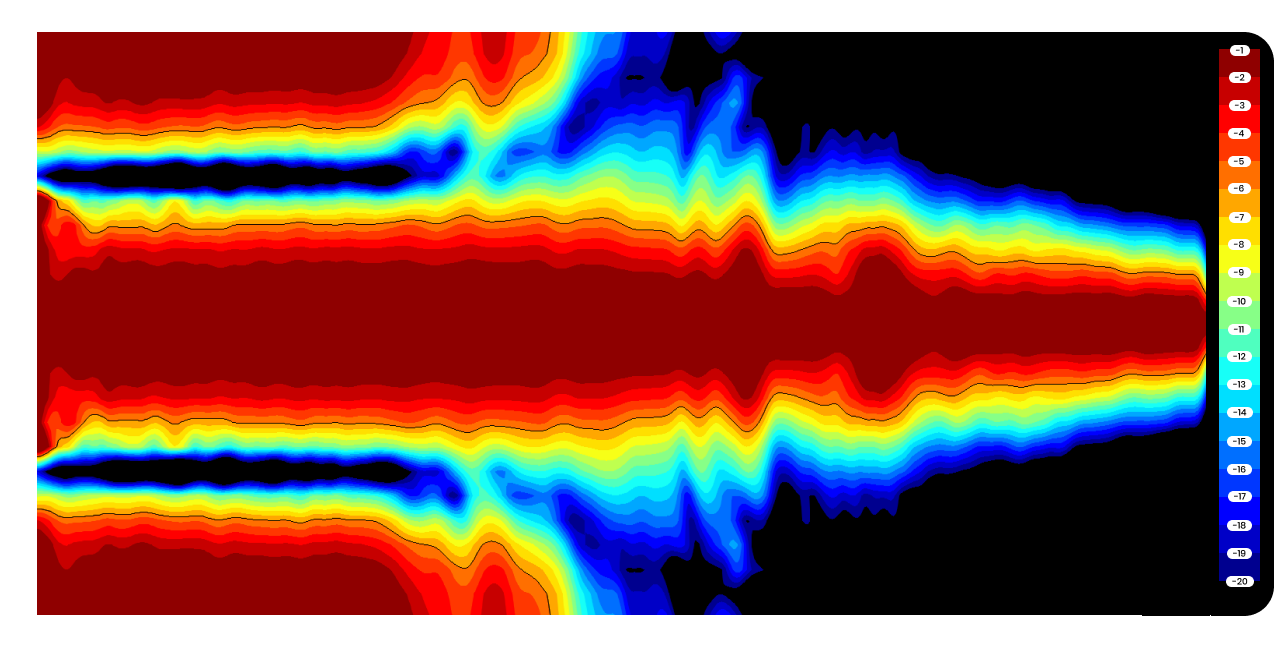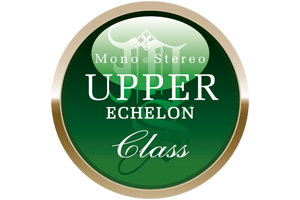3 times
less
Directional Acoustics: A Novel Approach
The cost of quality acoustic treatment for a room often surpasses that of high-end speakers themselves. Consequently, a more efficient approach lies in enhancing sound quality by directing sound waves towards the listener. This method minimizes wave radiation to reflective surfaces, thus reducing the interaction between the speakers and the room.
Our primary objective was to optimize sound diffusion in rooms without acoustic treatment. To this end, we harnessed the power of modern Computer-Aided Design (CAD) and advanced mathematical modeling techniques.
Through rigorous mathematical analysis, a series of detailed experiments, and critical subjective listening sessions, our team has crafted an acoustic system that adapts seamlessly to a variety of room dimensions. This system not only maintains an impeccable tonal balance and high resolution but also brings forth an extraordinary soundstage with unparalleled detail.
Triple Reduction in Room Resonances, No Additional Room Treatment


Controlling directivity, particularly in the low-frequency range, presents a significant technical challenge. Traditional methods to address this, such as low-frequency horns or speaker arrays, are not only costly but also demand considerable technical expertise for installation.
Our engineers addressed this issue by integrating a gradient-type low-frequency (LF) module into our system, yielding remarkable results. We achieved a threefold reduction in acoustic power radiation to the room (with a directional index of approximately 4.8 dB), in stark contrast to traditional closed enclosure speakers that emit low-frequency sound in all directions. This specific LF approach significantly reduces room resonance, especially in the lowest frequencies, without necessitating any extra room treatment. The resulting sound quality is not just purer but also more immersive, transforming any space into an optimal listening environment.
The application of mathematical modeling, particularly the finite element method, has been instrumental in refining our design. It enabled us to optimize the baffle construction, select the ideal crossover frequency, and substantially enhance the reproduction quality of low-frequency sounds.
Patent-Pending Midrange Enclosure
The mid-frequency range is pivotal in crafting an authentic soundstage, which is why considerable effort has been dedicated to the design of the mid- and high-frequency components in this patent pending technology. The focus on addressing mid-range frequency (MF) correction, particularly in its lower spectrum, led to the development of a unique acoustic enclosure. This innovation strikes an optimal acoustic balance between the mid-frequency and low-frequency ranges, enhancing overall sound quality and resulting in a significantly more nuanced and detailed soundstage compared to traditional systems.
Furthermore, the mid- and high-frequency (MF-HF) range is reproduced through a mathematically modeled, compact horn that is meticulously tuned to harmonize with the MF range. This unique horn design not only meets the highest technical standards but also produces a natural sound quality, free from the distortions often associated with poorly designed horns. This precise integration of mid- and high-frequency components results in a natural and high-fidelity soundstage, highlighting the innovative approach of this acoustic design.

Key Advantages of the Patent Pending Technology:
1. Enhanced Directivity and Sound Control: The patent pending acoustic enclosure design utilizes strategically placed openings and an innovative structure to effectively control mid-frequency sound propagation both horizontally and vertically. This helps to minimize reflections from walls, ceilings, and floors, ensuring that sound energy is focused directly towards the listener. As a result, the technology achieves better sound clarity and a more defined soundstage while reducing unwanted sound radiation to other surfaces.
2. Increased System Sensitivity: By leveraging rear wave utilization through mutual coupling with the front wave, the system sensitivity is increased by up to 3 dB. This design allows the loudspeaker to achieve higher sound pressure levels (SPL) without additional energy consumption, significantly enhancing the overall listening experience.
3. Lower Distortion Levels: The innovative enclosure design reduces internal pressure by equalizing it with external pressure, ensuring that the loudspeaker operates without additional mechanical load. This eliminates the “acoustic loading” effect, allowing the cone to move more freely. As a result, the system achieves lower distortion and smoother sound reproduction across a wide frequency range.
4. Optimized Front and Rear Wave Alignment: The patent pending acoustic enclosure design ensures that the front and rear sound waves propagate in the same direction, with minimal phase difference across the entire mid-frequency range (300–1700Hz). This prevents destructive interference and maintains high sound quality, ensuring more consistent sound propagation across a broad frequency spectrum.
This patent pending technology introduces a new approach to loudspeaker design, enabling better sound quality with lower costs and higher efficiency compared to traditional solutions


